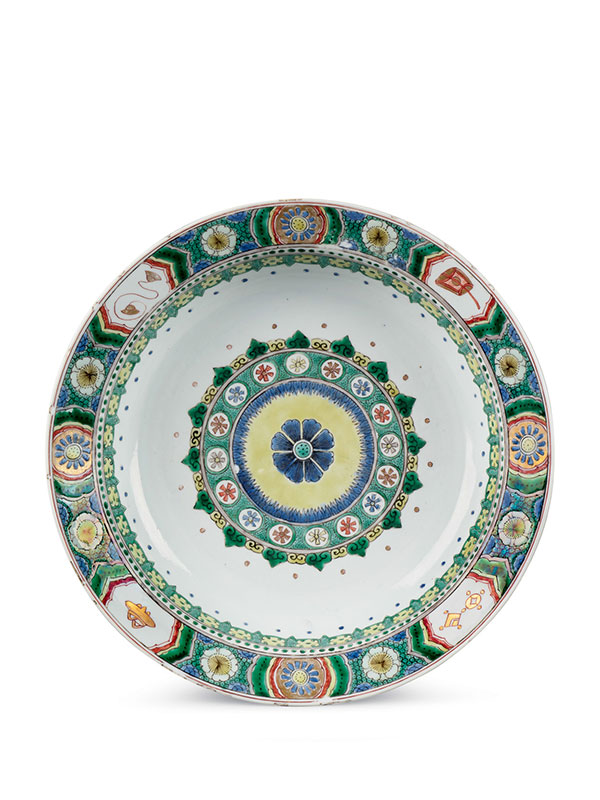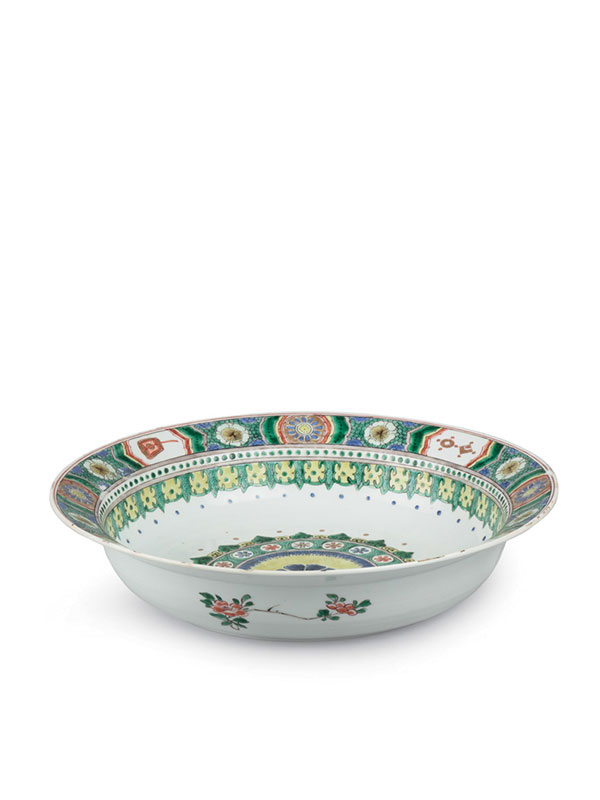Famille verte porcelain basin
A famille verte porcelain basin, the round body supported on a short rim foot and gradually flaring out into a sloping, wide rim. The base of the interior is decorated with a large rosette composed of small floral and ruyi motifs, while the broad rim is adorned with flowers and scholar’s objects such as a fan and an incense burner. The decoration is executed in overglaze enamels in green, blue, yellow and aubergine colours, and highlighted with red pigment. The exterior of the basin is decorated with small red floral motifs with green leaves. The basin is glazed overall, leaving only the foot rim unglazed and revealing the fine white porcelain body.
The term famille verte was coined by the porcelain collector Albert Jacquemart in the 19th century and describes wares decorated in polychrome colours where different shades of green enamel dominate. During the Ming dynasty potters used ‘five-coloured’ palettes to decorate. It consisted of a combination of red, yellow, green, turquoise and aubergine enamels, and sometimes underglaze cobalt blue was added.1 The use of this Ming style palette continued into the Qing dynasty, as is illustrated on this basin.
Provenance: private collection, the Netherlands
- Kerr, R., Chinese Ceramics- Porcelain of the Qing dynasty, 1644-1911, Victoria and Albert Museum, London, 1986, pp. 94-5


